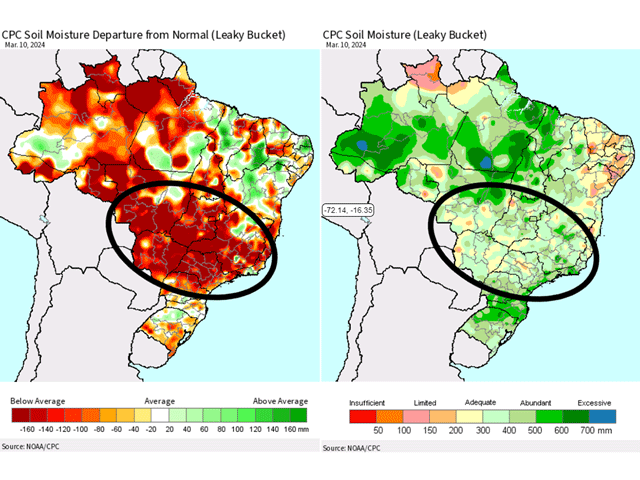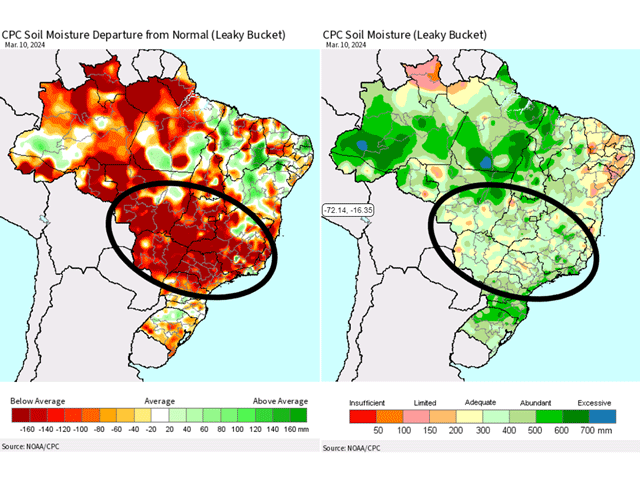South America Calling
Soil Moisture Inadequate for Brazil's Safrinha Corn
Rainfall in Brazil has not been as consistent as needed to be over the last few weeks to make any improvement in the subsoil moisture in Brazil. Rain has fallen about half as much as normal during the timeframe. It has been enough for safrinha (second-season) corn to germinate and early growth mostly in good condition, but it has not built subsoil moisture reserves that will be needed by the crop once the wet season rains shut down.
There are about six weeks left of the rainy season and those rains typically start to become less intense starting at the beginning of April. The average end date of the last 30-millimeter (1.2-inch) rain occurs May 5 in central but that varies quite a bit as those rains dwindle. Brazilian farmers rely on these rains to build a deep reserve of subsoil moisture to double-crop soybeans with corn.
After planting corn in February and early March, that gives only a two-month period of good rainfall before it hardly rains a drop. Producers hope the corn crop can make it through the pollination period with good rainfall and then rely on subsoil moisture reserves for the fill stage. In an average year, this can be achieved. This year, that will be a problem.
P[L1] D[0x0] M[300x250] OOP[F] ADUNIT[] T[]
The wet season rains have been light all season and have caused issues for the soybean crop with a particularly hot and dry start to the season. The rains that have come in since have been at a pace of roughly half of normal, so the last couple of weeks have been representative of this year's disappointing season.
Subsoil moisture, therefore, is significantly reduced across the primary safrinha corn areas from Parana to Mato Grosso to Minas Gerais. This triangular area accounts for roughly 90% of the safrinha corn crop and almost the entire area has seen reduced rainfall. In the image at the top of the page, you can see the struggle this area has had with soil moisture. Actual soil moisture is still adequate for the current stages of development when corn is young, but the reduced reserves are going to be a problem for the crop later in development.
If these rains end early as well, that will only exacerbate the issues for the safrinha corn crop in Brazil. Forecasts do not indicate any significant increase in the wet season showers through the end of the season. Most of the recent models are forecasting a continued decrease in the intensity and coverage of showers through the end of April. Rain will still occur, but there could be more stretches of reduced coverage and intensity that will be unable to build additional soil moisture.
So, although the safrinha corn conditions are currently favorable and expected to be so for the next month, when these rains wind down toward the end of April, these good conditions could turn quickly and at an inopportune time when corn is pollinating.
To find more international weather conditions and your local forecast from DTN, visit https://www.dtnpf.com/….
John Baranick can be reached at john.baranick@dtn.com.
(c) Copyright 2024 DTN, LLC. All rights reserved.






Comments
To comment, please Log In or Join our Community .